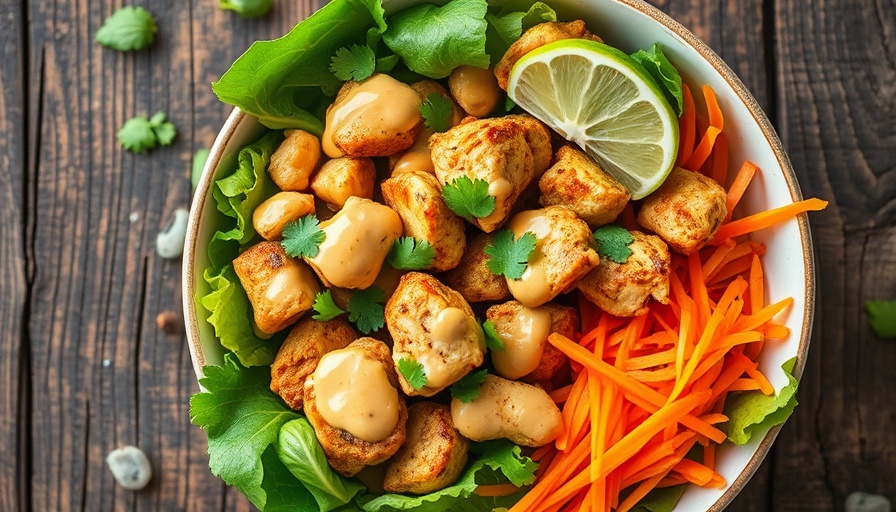
Deliciously Nutritious: The Joy of Peanut Chicken Power Bowls
If you’re searching for a filling, nutritious meal that bursts with flavor, look no further than the Peanut Chicken Power Bowl. Centered around tender baked chicken, this dish is elevated with a creamy, zingy peanut sauce that harmoniously complements fresh greens, carrots, and edamame. Not only is it delightful to the taste buds, but it also packs a nutritional punch that will keep you satisfied and energized.
Understanding the Nutritional Benefits
Edit your palate with edamame, young soybeans that are high in fiber and packed with vitamins. Research has shown that a diet inclusive of soy can aid in lowering cholesterol and help regulate blood sugar levels, making them an ideal choice for health-conscious eaters. Rich in protein, edamame is a complete plant-based source, ensuring you receive essential amino acids needed for building and maintaining muscle.
Customizing Your Bowl to Fit Dietary Needs
One of the key advantages of the Peanut Chicken Power Bowl is its adaptability. Whether you follow a vegetarian diet or have nut allergies, there are numerous substitutions you can easily make. For those who prefer plant-based options, consider substituting chicken with tofu or tempeh. Moreover, if peanuts are off the menu, almond or sunflower seed butter can create similarly delicious variations of the nutty sauce.
Enhancing Flavor with Bold Ingredients
The key to a stunning Peanut Chicken Power Bowl lies in its vibrant peanut sauce. Combining creamy peanut butter with lime juice, tamari, and a hint of chili garlic paste or sriracha can deliver a powerful burst of flavor. What’s more, the flexibility of this recipe allows you to source alternative brands for your sauce if needed. Always check for labels indicating added sugars to keep your dish both decadent and healthful.
Meal Prep Tips for Busy Foodies
This dish isn’t just great for dinner; it’s perfect for meal prepping. Prepare a batch of the chicken and the peanut sauce ahead of time and store them in your fridge. When it comes time to eat, simply assemble your power bowl fresh with greens and any vegetables you have on hand. This method not only saves time, but it allows for easy customization based on what you’re craving each day.
Mindful Eating: The Emotional Connection to Food
Cooking and sharing meals can evoke a strong emotional response, reinforcing connections with loved ones. By forging an emotional bond with nutritious foods like the Peanut Chicken Power Bowl, you are likely nurturing a healthier lifestyle while also indulging in the joy and love of cooking. This mindful approach enhances both mental and physical well-being as you savor each bite!
No matter how you decide to make your Peanut Chicken Power Bowl, the key is to enjoy the process and the nourishment it provides. So roll up those sleeves, grab your measuring cups, and let’s whip up this symphony of flavors!
For an added dose of inspiration, get creative with your veggie toppings. Spinach, kale, or even bell peppers can sprinkle in colors and nutrients, making your bowl not just a meal, but also a visually striking dish.
Get Cooking!
With all these tips in mind, why not dive into your own kitchen, experiment, and savor the deliciousness? Make the Peanut Chicken Power Bowl your next culinary adventure!
 Add Row
Add Row  Add
Add 




Write A Comment